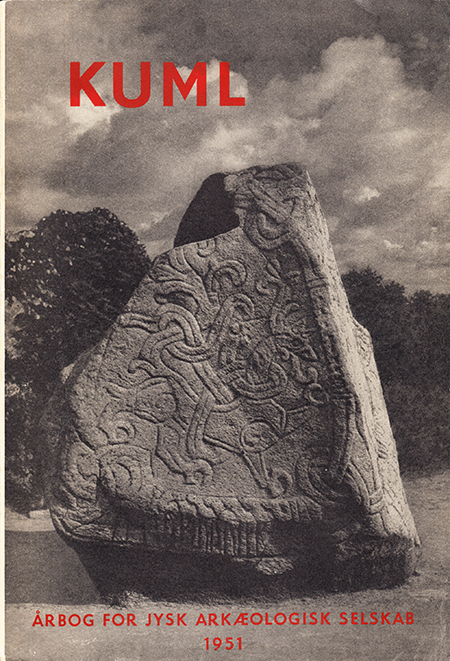Ukrudtsfrø som næringsmiddel
DOI:
https://doi.org/10.7146/kuml.v1i1.24755Keywords:
Frø, UkrudtAbstract
Seeds of weeds as food in the fore-Roman lron Age
Among the objects found in 1949 in the ruins of a burnt house on Gørding Heath was a small pottery vessel containing, in addition to sand and earth, about 95 ccs of burnt grain and seeds. The house site can be dated by means of its ceramic contents to the second division of the Celtic Iron Age. A statistical investigation of the vegetable remains showed there to be 65 ccs of barley and 30 ccs of seeds of weeds.
The barley is the naked type of six-row nodding barley, Hordeum tetrastichum Kcke., which predominated in Denmark and presumably in the remainder of northern and western Europe throughout the period up to approximately the commencement of our era. At that time this type of barley appears to have been gradually superseded by the husked type, which had achieved some degree of importance in Denmark even as early as the Later Bronze Age. Naked barley has never since regained its supremacy among Danish barley types, although it is known to have been cultivated in the 18th century. That it is still possible to grow it in Danish latitudes is shown by the fact that it has been cultivated - rather experimentally than commercially -in Jutland during the last few decades. For example the author saw a field of ripe naked barley in Central Jutland in 1937. The size of the grains of the Gørding barley is much less than that of modern barley, while even compared with other Iron Age barley it is small, suggesting that the ploughland belonging to the village was very poor.
Vessels of the size of the one here described, which hold about a quart, occur regularly in Iron Age graves and must be looked upon as table vessels as they are too small for storage of foodstuffs. The seeds found in this vessel must therefore be considered as a meal, or as the remains of one. When it is taken into consideration that certain of the species of seeds found belong to plants which do not occur in cornfields, and when it is further recalled that only quite small quantities of weeds would be harvested together with sicklereaped corn, the conclusion cannot be avoided that the weeds were gathered for their own sake and the seeds deliberately added to the corn. That the seeds of certain weeds have been gathered is shown by the discovery of unmixed stores of Pale Persicaria, White Goosefoot and Corn Spurry in burnt Iron Age houses in Jutland. The impressions of the seeds of these plants and of Black Bindweed are similarly frequently found in Iron Age pottery. The seeds of the seventeen other species are presumably only present because these plants grew together with those collected. No large quantity of seeds of weeds could be collected from corn fields, but rather from these fields after the harvest or, perhaps most likely, from first year's fallow, where the annuals would have favourable conditions for growth until the grasses and other perennials reached a sufficient predominance in numbers to squeeze them out.
The stomach contents of the two bodies found in the bogs at Borremose and Tollund show that their meals had consisted partly of seeds of weeds. In those two cases there was no evidence of the quantitative relationship of corn and seeds; but here we have an example which suggests the probability that uncultivated plants supplied about a third of the meal. Together with the evidence of the bodies this little find gives a basis for the conclusion that the gathering of weed seeds played a very important role in the Iron Age in Jutland. Circumstances made it necessary for the population to supplement the insufficient yield of their ploughlands by a partial reversion to the ancient practice of food-gathering, which up to the discovery of agriculture was the only way in which mankind could furnish itself with vegetable food.
Hans Helbaek
Downloads
Published
How to Cite
Issue
Section
License
Fra og med årgang 2022 er artikler udgivet i Kuml med en licens fra Creative Commons (CC BY-NC-SA 4.0).
Alle tidligere årgange af tidsskriftet er ikke udgivet med en licens fra Creative Commons.


